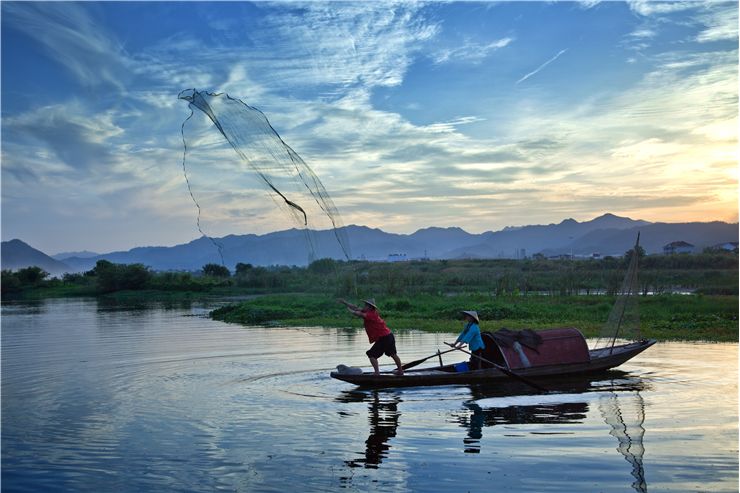History of Gillnetting and Problems
Gillnetting is a method of fishing with gill nets (or gillnets). “Gillnet” is a type of net that is used in oceans and some fresh waters by commercial fishermen and by some artisanal fishermen (fisherman that fish small-scale.) Gillnets are large panels of net that are placed vertically in water a fish gets stuck in them. Fish can be stuck in one of three ways: they can be wedged (when mesh holds them around the body), gilled (when mesh slips beyond gills and they can’t swim back), and they can get tangled by fins, teeth or other protrusions.
Gillnets are old fishing tools and we have archaeological evidence from the Middle East that proves so. Native fishermen of North America made their nets of nettles and the inner bark of cedar. To make the net stand vertically, they tied rocks to the bottom edge of the net and pieces of wood at the upper part. Ends of nets were suspended from a shore or between two boats. Japanese used gillnets for over 3,000 years. Vikings used gillnets to catch herrings and fishermen from the Shetland Islands use the same type of gillnets which they “inherited” while the Shetland Islands were settled by Vikings. Fishermen from other places also used gillnets since the ancient times.
Colonial America inherited its gillnets from immigrant fishermen from northern Europe and the Mediterranean which brought they types and styles of net fishing. These fishermen used 8m long boats on Colombia River which were powered by oars and sails (row-sail boats.) I the early 20th century, steamboats were used to drag these small boats to the place rich with fish and, at the end of the day, they would drag them back – full with fish.
By the 1930s, the row-sail boats were almost completely replaced with gas powered boats. This and invention of the powered drum (a circular device which is placed to the side of the boat and which draws in the nets without use of human power) in 1930s, improved gillnetting because it allowed fishermen to fish in areas they had previously been unable to go. World War II, with all bad it brought, improved navigation and communication devices which also improved fishing after the war. Invention and improvement of synthetic fibers like nylon, improved gillnets directly by making them lighter, stronger and cheaper.
Problem with nylon nets is one of its advances – they last longer. This is good when they are in use but if they are lost they can last for years before they are destroyed by currents and strong enough fish. This leads to “ghost fishing” - nylon net gets caught in rocks or reefs and corals and can catch sea-life in it which has not strength to break free. Nets then restrict movement of sea life caught like this which can then starve to death or become lacerated by nylon and infected. Those that must return to surface to breathe can suffocate. There is still no successful solution for this problem.
